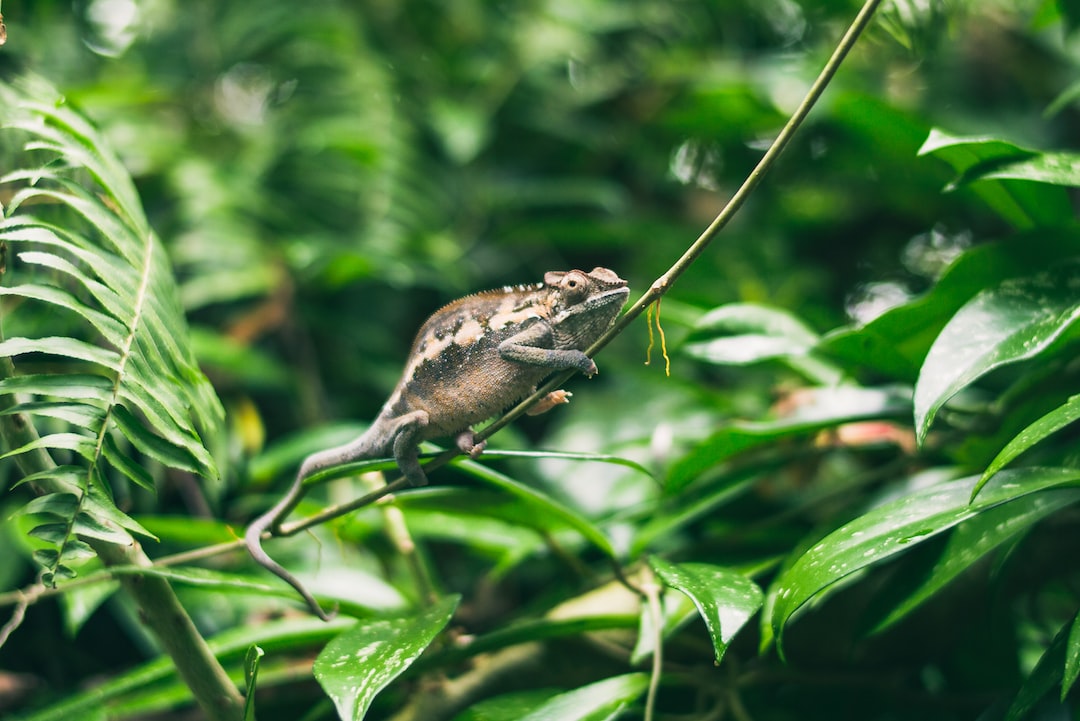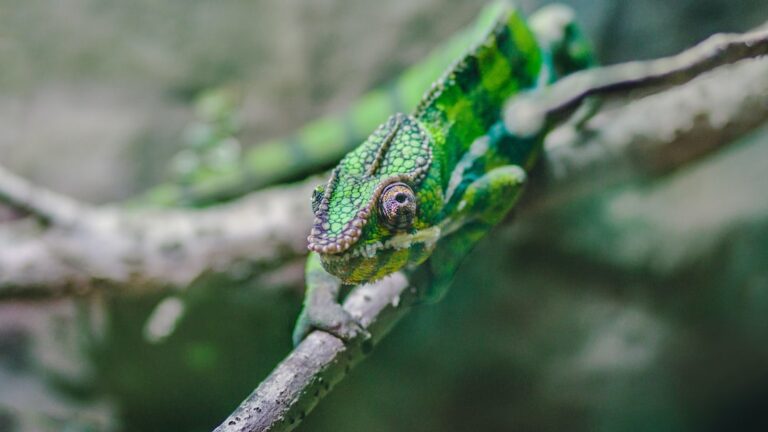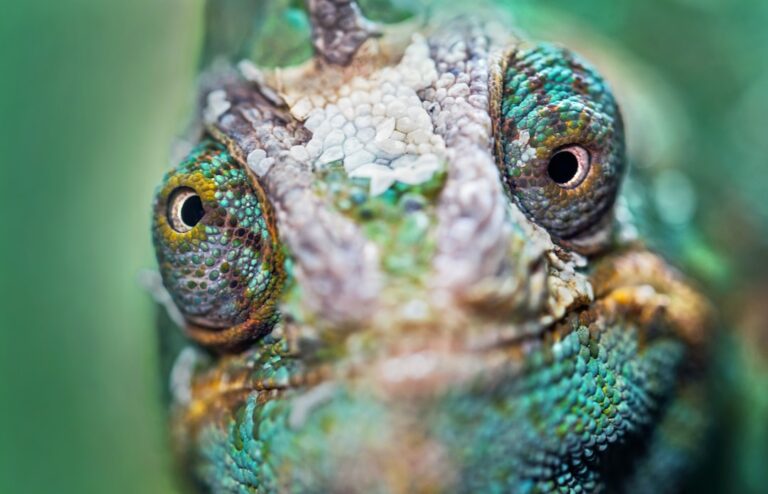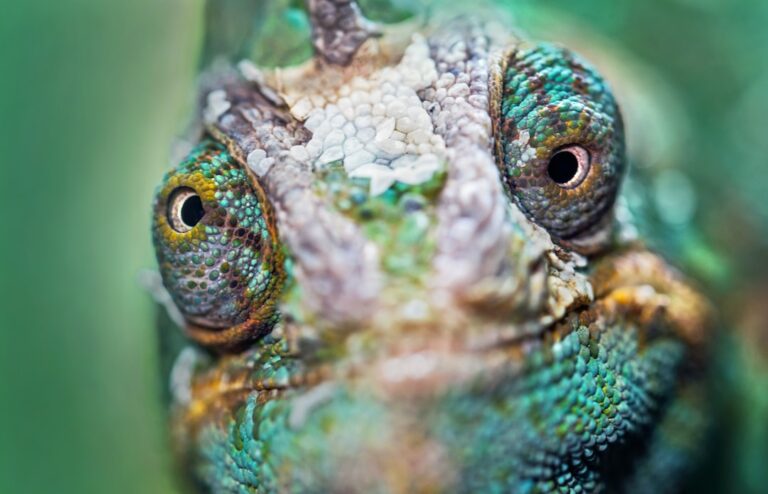Can Chameleons Live Outside?
Chameleons are fascinating creatures known for their ability to change color and blend into their surroundings. They belong to the reptile family and are native to Africa, Madagascar, and parts of Asia and Europe. Chameleons have unique characteristics that set them apart from other reptiles, such as their independently moving eyes, long tongues, and prehensile tails.
Understanding the natural habitat of chameleons is crucial for their well-being. In the wild, chameleons live in a variety of environments, including rainforests, deserts, and savannas. Each species has specific requirements for temperature, humidity, and vegetation. By replicating their natural habitat in captivity, we can ensure that chameleons thrive and live a healthy life.
Table of Contents
The Natural Environment of Chameleons
Chameleons are found in a wide range of habitats, each with its own unique characteristics. For example, the veiled chameleon is native to the mountainous regions of Yemen and Saudi Arabia, where it can be found in trees and shrubs. On the other hand, the panther chameleon is native to Madagascar’s rainforests and lives among dense vegetation.
Climate plays a significant role in the survival of chameleons. They are ectothermic animals, meaning they rely on external sources of heat to regulate their body temperature. In warmer climates, chameleons can bask in the sun to raise their body temperature, while in cooler climates, they seek shelter to avoid extreme temperatures.
Vegetation is another important factor in the natural habitat of chameleons. They rely on trees and plants for shelter and camouflage. Chameleons have specialized feet that allow them to grip onto branches and climb with ease. Their ability to change color also helps them blend into their surroundings and avoid predators.
Can Chameleons Survive in Captivity?
Keeping chameleons in captivity can be challenging, as they have specific needs that must be met for their survival. Many chameleon species are not well-suited for life in captivity due to their specialized requirements. However, with proper care and attention to detail, it is possible to create a suitable environment for them.
One of the main challenges of keeping chameleons in captivity is providing the right temperature and humidity levels. Chameleons require a warm and humid environment to thrive. This can be achieved through the use of heat lamps, misting systems, and proper ventilation. It is important to monitor these conditions regularly to ensure they are within the optimal range.
Another challenge is providing enough space for chameleons to move and climb. They are arboreal creatures and need vertical space to explore and exercise. A small enclosure can lead to stress and health problems for chameleons. It is recommended to provide a spacious enclosure with plenty of branches and foliage for them to climb on.
Factors to Consider Before Keeping a Chameleon as a Pet
Before deciding to keep a chameleon as a pet, there are several factors that need to be considered. Firstly, owning a chameleon requires a significant time commitment. They need daily care, including feeding, misting, and cleaning their enclosure. Additionally, chameleons can live for several years, so it is important to be prepared for a long-term commitment.
The cost of owning a chameleon should also be taken into account. Chameleons themselves can be expensive to purchase, especially if you are looking for a specific species or color morph. Additionally, there are ongoing costs for food, lighting, heating, and veterinary care. It is important to budget for these expenses before bringing a chameleon into your home.
Researching and understanding the needs of chameleons is crucial before getting one as a pet. Each species has specific requirements for temperature, humidity, and diet. It is important to educate yourself on these needs and ensure that you can provide a suitable environment for your chameleon to thrive.
The Importance of Providing a Suitable Environment for Chameleons
Creating a suitable environment for chameleons is essential for their health and well-being. There are several key elements that need to be considered when setting up their enclosure. These include temperature, humidity, lighting, and the overall layout of the habitat.
Chameleons require a temperature gradient in their enclosure, with a warm basking spot and cooler areas for them to retreat to. This can be achieved through the use of heat lamps and thermostats. It is important to monitor the temperature regularly to ensure it remains within the optimal range for your specific species of chameleon.
Humidity is another important factor to consider. Chameleons require high humidity levels to stay hydrated and shed their skin properly. This can be achieved through the use of misting systems or by providing a water source in their enclosure. It is important to monitor the humidity levels regularly and adjust as needed.
Proper lighting is crucial for chameleons, as they rely on UVB rays to synthesize vitamin D3, which is essential for calcium absorption. UVB bulbs should be used in conjunction with a heat source to provide both heat and UVB rays. It is important to replace these bulbs regularly, as they lose their effectiveness over time.
How to Create an Outdoor Habitat for Chameleons
Creating an outdoor habitat for chameleons can provide them with additional benefits and stimulation. However, it is important to take certain precautions to ensure their safety and well-being. Here is a step-by-step guide to creating an outdoor habitat for chameleons:
1. Choose the right location: Select a location that receives partial sunlight and shade throughout the day. This will allow your chameleon to regulate its body temperature and avoid overheating.
2. Build a secure enclosure: Use materials such as mesh or wire to create a secure enclosure that will protect your chameleon from predators. Make sure the enclosure is tall enough to allow your chameleon to climb and move freely.
3. Provide natural vegetation: Plant trees, shrubs, and other plants that are native to your chameleon’s natural habitat. This will provide them with hiding spots, climbing opportunities, and a sense of security.
4. Create a water source: Chameleons need access to fresh water for drinking and bathing. You can provide a shallow dish or install a misting system to ensure they stay hydrated.
5. Monitor the environment: Regularly check the temperature, humidity, and overall condition of the outdoor habitat. Make adjustments as needed to ensure your chameleon’s well-being.
Benefits and Risks of Keeping Chameleons Outside
Keeping chameleons outside can provide them with several benefits. One of the main advantages is access to natural sunlight. Natural sunlight provides chameleons with UVB rays, which are essential for their health and well-being. It also allows them to engage in natural behaviors such as basking and hunting.
Fresh air is another benefit of keeping chameleons outside. Indoor environments can sometimes become stagnant, leading to poor air quality. By providing an outdoor habitat, you can ensure that your chameleon has access to fresh air, which is important for their respiratory health.
However, there are also risks associated with keeping chameleons outside. One of the main risks is exposure to predators. Depending on where you live, there may be birds, cats, or other animals that could pose a threat to your chameleon. It is important to take precautions such as installing netting or fencing to protect your chameleon from predators.
Extreme weather is another risk to consider. Chameleons are sensitive to temperature fluctuations and can become stressed or even die if exposed to extreme heat or cold. It is important to monitor the weather forecast and bring your chameleon indoors if necessary.
How to Protect Chameleons from Predators and Other Dangers
Protecting chameleons from predators and other dangers is essential for their safety. Here are some tips to help keep your chameleon safe:
1. Install fencing: Use mesh or wire fencing around the outdoor habitat to prevent predators from gaining access. Make sure the fencing is buried underground to prevent animals from digging underneath.
2. Use netting: Install netting over the top of the enclosure to prevent birds or other animals from swooping down and grabbing your chameleon. Make sure the netting is securely fastened to prevent any gaps.
3. Provide hiding spots: Create hiding spots within the enclosure where your chameleon can retreat if it feels threatened. This can be done by adding plants, branches, or other structures that provide cover.
4. Monitor behavior: Regularly observe your chameleon’s behavior to look for signs of stress or illness. If you notice any changes in behavior, it may indicate that something is wrong and immediate action should be taken.
Common Health Problems of Chameleons in Outdoor Habitats
Chameleons in outdoor habitats can be susceptible to a variety of health problems. One common issue is dehydration, especially in hot climates. It is important to provide a water source and regularly mist the enclosure to ensure your chameleon stays hydrated.
Parasites are another common problem for chameleons in outdoor habitats. They can be contracted from insects or other animals that come into contact with your chameleon. Regular check-ups with a veterinarian and proper hygiene practices can help prevent parasite infestations.
Other health problems that can occur in outdoor habitats include respiratory infections, metabolic bone disease, and skin infections. Regular check-ups with a veterinarian who specializes in reptiles can help catch and treat these issues early on.
Understanding the Needs of Chameleons for a Healthy Life
In conclusion, understanding the needs of chameleons is crucial for their well-being. By replicating their natural habitat and providing a suitable environment, we can ensure that chameleons thrive and live a healthy life. Whether kept in captivity or in an outdoor habitat, chameleons require specific conditions to survive and thrive.
Before deciding to keep a chameleon as a pet, it is important to consider the responsibilities and costs involved. Owning a chameleon requires a significant time commitment and ongoing expenses. It is also important to research and understand their needs before bringing one into your home.
Creating an outdoor habitat for chameleons can provide them with additional benefits and stimulation. However, it is important to take precautions to ensure their safety and protect them from predators and extreme weather.
By understanding the needs of chameleons and providing a suitable environment, we can ensure that these fascinating creatures live a healthy and fulfilling life. Responsible chameleon ownership requires dedication, knowledge, and a commitment to meeting their specific needs.
If you’re curious about whether chameleons can live outside, you might also be interested in an article on Reptile Friend titled “Can Chameleons Survive in Cold Weather?” This informative piece explores the ability of chameleons to adapt to different climates and discusses the precautions necessary for keeping them in colder environments. Check it out here.







